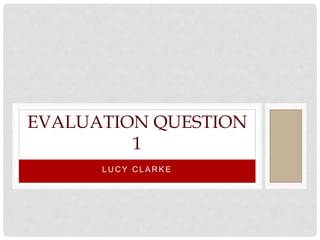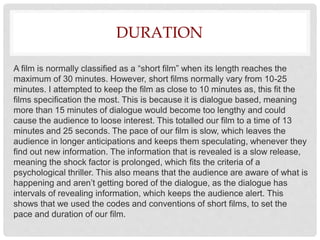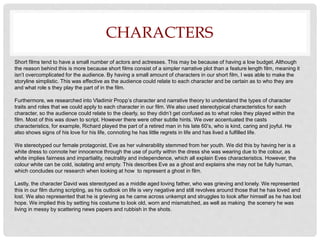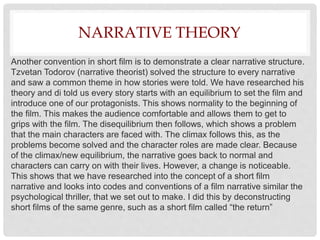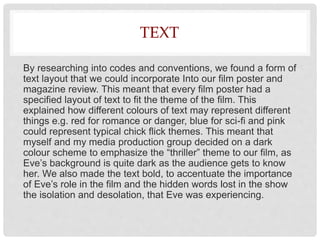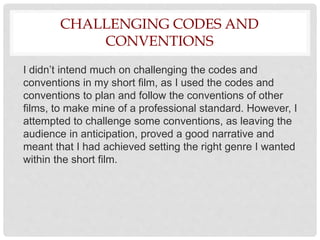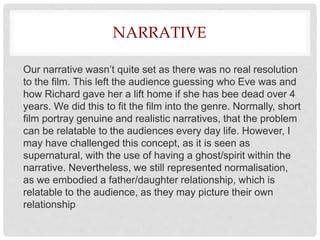The document discusses the codes and conventions used in Lucy Clarke's short film. It addresses several key aspects:
1) The film uses conventions of short films like a clear narrative structure, small number of characters, and duration between 10-15 minutes.
2) Characters were developed based on research into character archetypes and stereotypes to make them easily understood.
3) Narrative theory was applied to structure the story with an initial equilibrium, disequilibrium/problem, and climax/resolution.
4) Film poster and magazine review conventions like imagery, layout, and stills from the film were employed to effectively promote the psychological thriller genre.
